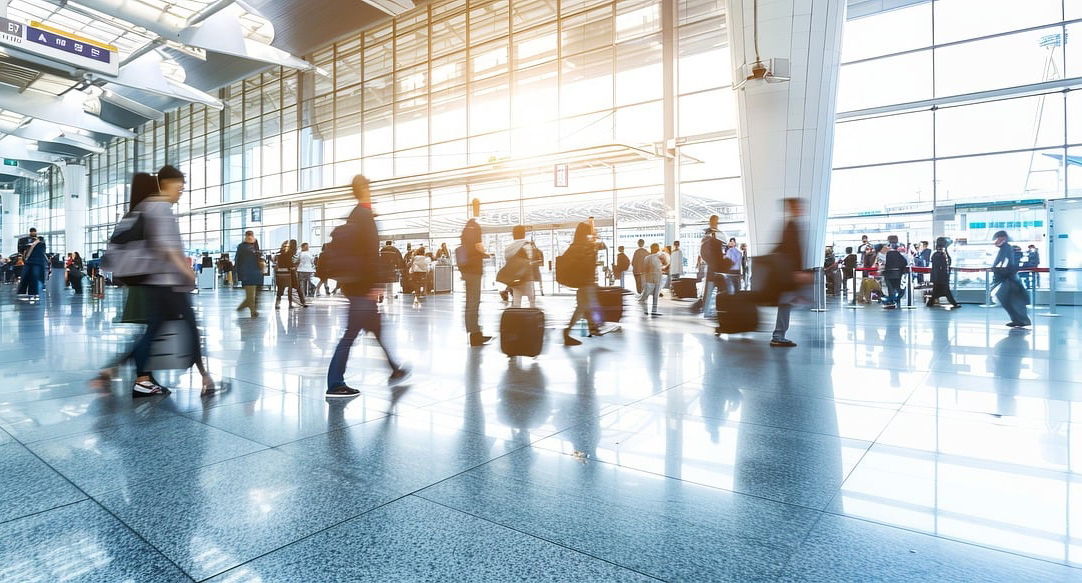STUK investigated radiation exposure caused to luggage by the new fluoroscopic equipment
In the spring of 2023, the Radiation and Nuclear Safety Authority (STUK) investigated the radiation dose caused by fluoroscopic devices used for the security checks of hand luggage at Helsinki Airport. The issue emerged when increased radiation doses were observed in the dosemeters used to monitor radiation doses of radiation workers travelling by air. The supervision project showed that new computed tomography (CT)-based 3D fluoroscopic devices produce a higher radiation dose than conventional fluoroscopic devices in the dosimeter which is subjected to scanning inside the luggage.

Since 2022, Finavia Corportion has gradually introduced new types of computed tomography (CT)-based fluoroscopic equipment at Helsinki Airport for the security inspection of passengers’ hand luggage. In these devices, known as CT scanners, the X-ray tube and the radiation detector rotate around the luggage belt. Cross-sectional images of the suitcase and its contents taken from different directions are converted into a high-resolution three-dimensional image using a calculation program. On conventional fluoroscopic devices, the X-ray tube and the detector are positioned on opposite sides of the machine, and the luggage is transported on a conveyor belt between the detector and the X-ray tube.
According to STUK’s investigation, CT scanners generate a significantly higher radiation dose for the scanned luggage than the previous devices. The X-rays generated by the CT scanner do not pose any danger to passengers or security personnel as the devices are well protected and the radiation is not directed outside the device. The radiation emitted by the CT scanner does not damage the luggage either. Sometimes radiation workers carry a personal dosemeter and the dosemeter can show significant doses of radiation even after one scan. In many cases, the dosemeter was forgotten in the bag for the duration of the scan.
Measurements confirmed the radiation dose monitoring findings
STUK monitors radiation exposure during radiation work and ensures that the dose limits set for radiation work are not exceeded. STUK maintains the dose register provided for in the Radiation Act (859/2018), in which information concerning, for example, the results of radiation workers’ personal dose monitoring is stored. STUK requests a more detailed report from the operator if higher than normal radiation doses are measured for employees. In 2022, the number of measurement results to be clarified increased significantly. In this connection, it became apparent that a significant number of the measurement results to be investigated were due to luggage screening at the airport.
The measurements made at Helsinki Airport confirm the observations made in STUK’s dose monitoring. CT scanners cause significantly higher radiation exposure to luggage compared to traditional luggage X-rays. The measurements were performed with two different dosemeters, a thermoluminescence (TL) and a direct ion storage (DIS) dosemeter. By varying the fluoroscopic method in the test arrangement, it was found that the most likely radiation dose detected by the TL dosimeter is approximately 2–3 millisieverts (mSv) and that the radiation dose detected by the DIS dosimeter is roughly 1–2 millisieverts per one scan. This is more than the dose typically accumulated in the dosemeters from actual radiation work. This information is relevant in situations where an employee’s dosemeter has accidentally passed through the CT scanner. Then, it should be distinguished at a later stage which part of the radiation dose indicated by the dosemeter the employee received form their work and which part was caused by the luggage scan.
New instructions for air passengers concerning transporting dosemeters
According to the previous instructions, it was recommended to carry the dosemeter in hand luggage as traditional hand luggage X-rays caused quite small radiation doses, less than the X-ray devices used for luggage entering the cargo hold. According to the new instructions, the user of the dosemeter must request during the security inspection that the dosemeter is not scanned using CT scanners. Helsinki Airport also uses traditional luggage X-rays which cause a negligible radiation dose. Despite the instructions, the number of accidental scans did not decrease, but more than half of STUK’s accounts on doses in 2023 were still due to accidental scans at the airport.
"It is important to inform radiation workers who use dosemeters, and especially those who are travelling by air for work, about the radiation dose of the new CT scanners on their luggage. Increasing awareness will hopefully reduce the number of accidental scans of dosemeters in the future," says Inspector Emmi Koskenlehto from STUK.
The results of STUK’s survey can also be used to share information about dosemeters and their use with personnel performing security checks at the airport. Problems with dosimeter fluoroscopy have also been observed in other countries that use CT scanners, but no extensive surveys have been carried out before this. This means that STUK’s survey may also provide additional information to radiation safety authorities and radiation users in other countries.